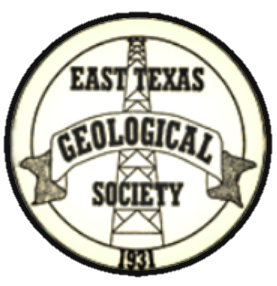NOVEMBER 2017 LUNCHEON MEETING
Dr. Jeff Dravis
of Dravis Interests, Inc. and Dravis Geological Services Houston, Texas (http://www.dravisinterests.com)
presents
Influence of Strong Easterly Trade Winds on Carbonate Plays
11:30 AM Wednesday, November 15, 2017
at the Cascades
4511 Briarwood Road
Tyler, TX 75709
Cost: $20
BIOGRAPHY
Jeff Dravis is a consulting carbonate geologist, primarily focused on aiding in the discovery of oil and gas deposits, or enhancing their development once they are discovered. He also conducts applied training seminars for industry.
Jeff received bis Bachelor of Science degree in Geology from St. Mary's University in San Antonio, Texas in 1971. He received a Master of Science degree in Marine Geology in 1977 from the University of Miami's Rosenstiel School of Marine and Atmospheric Sciences, where Dr. Harold R. Wanless was his thesis supervisor. His thesis was entitled " Holocene Sedimentary Environments on Eleuthera Bank, Bahamas." In the summer of 1976, Jeff entered Rice University, Houston, Texas, to begin work on deep-water carbonates under the direction of Dr. James Lee Wilson.
In 1980, be was awarded a Ph D in Geology; his dissertationwas entitled "Sedimentology and Diagenesis of the Upper Cretaceous Austin Chalk Formation, South Texas and northern Mexico."
In 1978, Dr. Dravis began his professional career with Exxon Production Research Company in Houston. There, he conducted applied research on carbonate facies, diagenesis and porosity evolution, and also headed up Exxon's worldwide training efforts in carbonates. This training included teaching in-house seminars, as well as leading combined modem (Bahamas and Florida) and ancient (Texas and New Mexico) carbonate field seminars.
In 1986, Jeff started his own consulting practice in Houston. In 1988, he founded Dravis Interests, Inc. to provide technical expertise and training in applied carbonate petroleum geology to the oil and gas industry. In May of 2000, Dravis Geological Services was created to handle all technical consulting projects.
Jeff has been involved in 179 technical projects worldwide, working sequences ranging in age from Cambrian to upper Tertiary. He has presented 254 in-house and field seminars to industry, both on a public and private basis, including dozens of seminars to Caicos Platform in the southeastern Bahamas. His clients are domestic and foreign oil companies, both majors and independents.
Jeff has been an adjunct Professor of Geology at Rice University since 1987, where he teaches parts of courses, takes students into the field, and periodically serves on thesis committees. For the past two years, he has taught the carbonate geology segment of the University of Houston's Professional Master's Program in Petroleum Geology.
ABSTRACT
Influence of Strong Easterly Trade Winds on Carbonate Plays:
Relationships Developed from Caicos Platform (Southeastern Bahamas) and Applied to the Cretaceous of the Gulf of Mexico
Strong and persistent easterly trade winds define Holocene patterns of carbonate sedimentation across the Caicos Platform in the southeastern Bahamas. Resultant sedimentary facies models have wider applicability to the exploration for subsurface carbonate plays than existing oceanic models, based on the northern Bahamas, because most ancient basins were intracratonic and uninfluenced by oceanic processes.
Excitingly, these newer, alternative models offer the opportunity to explore in areas previously considered nonprospective by northern Bahamian standards. The Caicos models have equal application to both carbonate platforms and ramps in the rock record, as well as to broad cratonic epeiric seas not connected to an open ocean.
The grainstone-dominated Caicos Platform exhibits reservoir potential over much of its surface, in contrast to northern Bahamian platforms, where oceanic tidal currents or swells and gentle easterly trade winds limit reservoir potential to platform margins. Strong easterly trade winds across Caicos Platform produce widespread Holocene platform-interior oolitic, skeletal and grapestone sand bodies on this platform. Orientations of the ooid sand bodies depend on preexisting topography and water depth, a relationship applicable to the rock record. Strong trade winds further permit reefs and ooids to coexist in many settings, allow isolated linear reefs to flourish on certain leeward platform margins, and promote effective off-bank transport of carbonate sands to create onlapping grainstone wedges.
Models gleaned from Caicos Platform better explain the occurrence of Cretaceous reef and/or oolitic reservoirs well inboard of platform margins (Black Lake Field in Louisiana; Fairway Field in East Texas) than do the existing northern Bahamian models. Caicos Platform models also better explain the origin of the thick onlapping wedge of skeletal sand at Poza Rica oilfield (Mexico).
Caicos Platform easterly trade wind models apply equally to any subsurface basin or basin portion that developed 5-22 degrees north or south of the paleoequator. Future carbonate exploration or exploitation now should factor in not only the geological age of a sequence of interest, but also its physiographic and climatic setting at a global and local scale.
